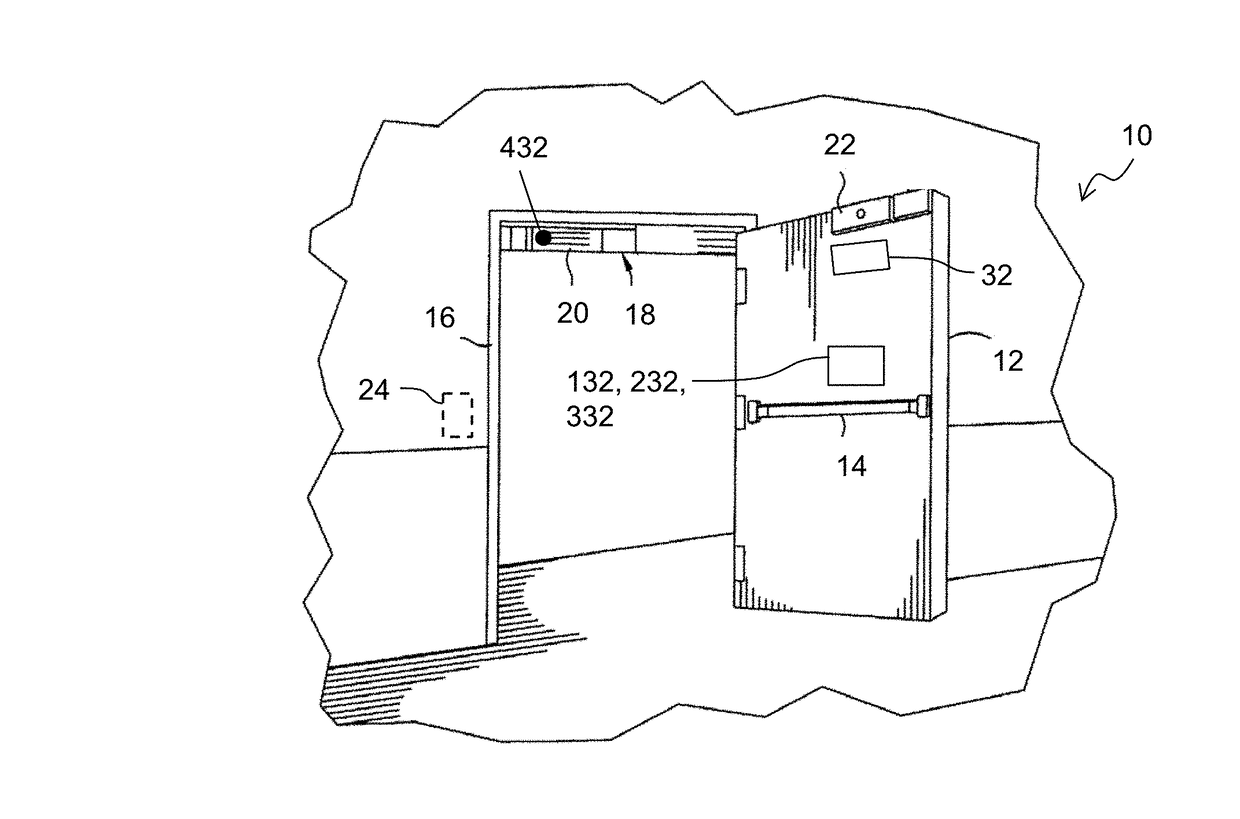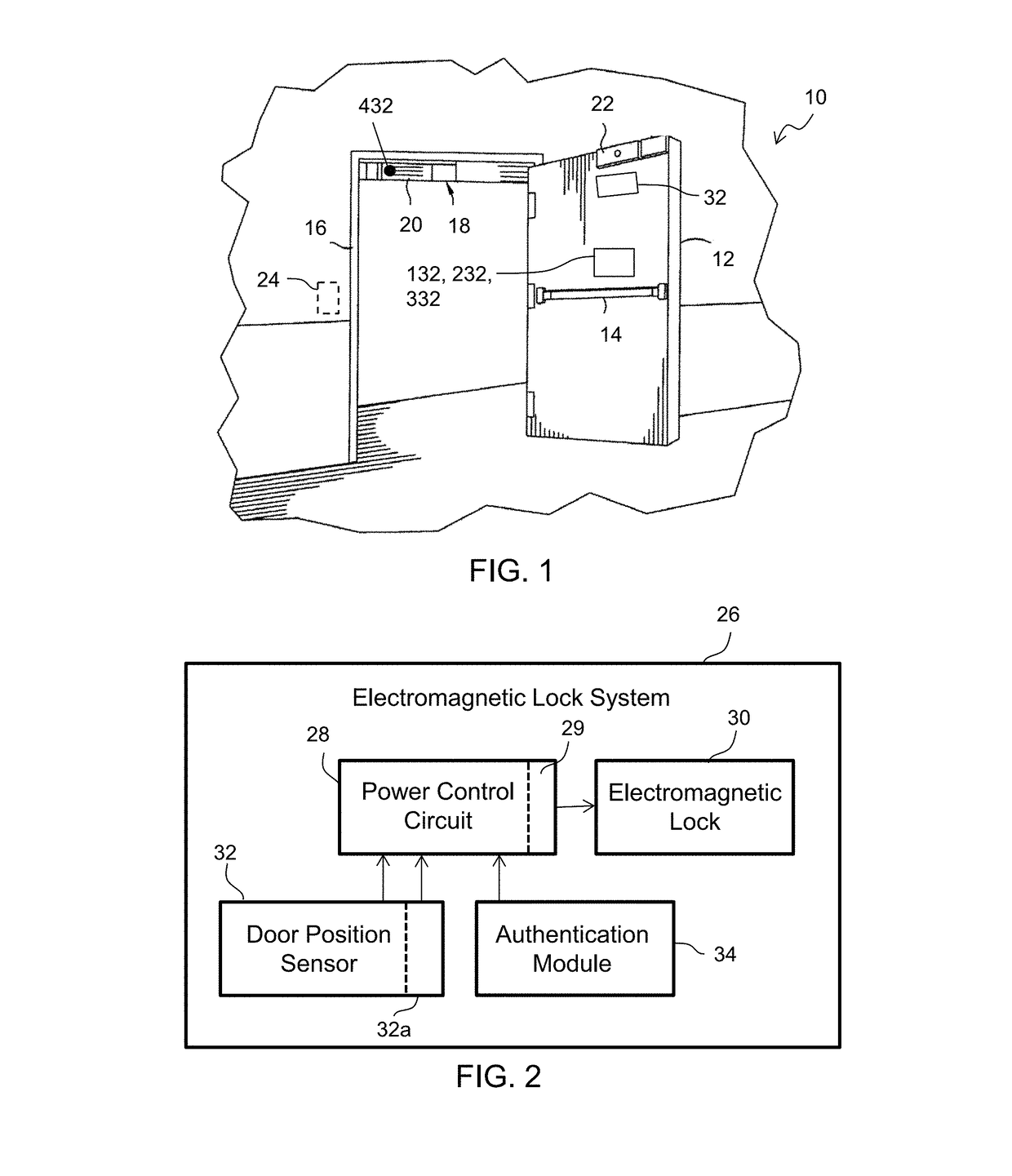Reduced power consumption electromagnetic lock
a technology of electromagnetic locks and power consumption, applied in the field of electromagnetic locks, can solve the problems of unnecessarily expend energy, system suffer from a number of significant drawbacks, waste of energy (electricity), etc., and achieve the effect of constant current flow through the windings
- Summary
- Abstract
- Description
- Claims
- Application Information
AI Technical Summary
Benefits of technology
Problems solved by technology
Method used
Image
Examples
Embodiment Construction
[0028]As used herein, the term “unauthorized attempt to open the door” shall mean a forceful attempt to open the door to gain unauthorized entry to an area secured by the door. The term “naturally occurring external forces” shall mean forces that may be applied to the door (such as wind forces or vibration) that may move the door from its closed position other than forces attributed to an unauthorized attempt to open the door. Referring to FIG. 1, in an electromagnetic door locking system 10 in accordance with the present invention, mounted to door frame 16 is an electromagnet assembly 18 including electromagnet 20. Door 12 is provided with an armature 22 for electromagnetically locking to electromagnet 20. In a secured setting, an authentication device 24, such as a keypad, swipe card reader, key fob reader or biometric sensor may be provided whereby the electromagnet 20 de-energizes only upon input of proper access credentials at authentication device 24, thereby releasing armatur...
PUM
 Login to View More
Login to View More Abstract
Description
Claims
Application Information
 Login to View More
Login to View More - R&D
- Intellectual Property
- Life Sciences
- Materials
- Tech Scout
- Unparalleled Data Quality
- Higher Quality Content
- 60% Fewer Hallucinations
Browse by: Latest US Patents, China's latest patents, Technical Efficacy Thesaurus, Application Domain, Technology Topic, Popular Technical Reports.
© 2025 PatSnap. All rights reserved.Legal|Privacy policy|Modern Slavery Act Transparency Statement|Sitemap|About US| Contact US: help@patsnap.com



